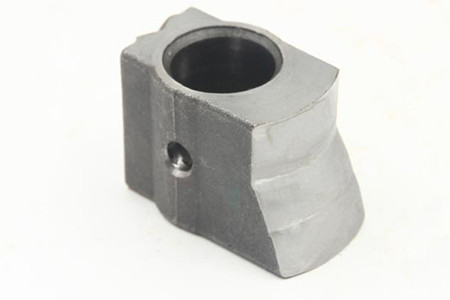Understanding Gearbox Shift Blocks: Function, Types, and Importance
Source: http://www.yonglingcn.com Time: 2023-08-24 Hits:0Gearbox shift blocks play a crucial role in the operation of vehicles equipped with manual transmissions. These mechanical components, also known as gear shift mechanisms or shift forks, are responsible for engaging and disengaging gears in the transmission system, enabling smooth and efficient gear changes. In this article, we will delve into the function, types, and importance of gearbox shift blocks in manual transmissions.
Function
Gearbox shift blocks serve as the intermediary between the gear lever manipulated by the driver and the actual gear engagement process within the transmission. When the driver moves the gear lever, it triggers the corresponding shift block to move, thus engaging the desired gear. This seamless process ensures the transfer of power from the engine to the wheels at different speeds and loads.
Types
There are several types of gearbox shift blocks, each designed to handle specific gear engagement patterns and configurations. Some of the most common types include:
1. Linear Shift Blocks: These shift blocks move in a linear motion and are commonly found in manual transmissions with a straightforward gear pattern. They are used for engaging gears in a sequential manner, making them suitable for most passenger vehicles.
2. H-Pattern Shift Blocks: H-pattern shift blocks are used in transmissions with a more complex gear layout, often resembling the shape of an "H." This type of shift block allows drivers to engage gears in a non-sequential manner, providing flexibility for various driving conditions.
3. Dog-Leg Shift Blocks: Dog-leg shift blocks are a variation of the H-pattern, with specific gears arranged in a dog-leg pattern. They are often used in performance-oriented vehicles, as they prioritize quick shifts between specific gears while requiring less movement for common gear changes.
4. Reverse Gear Mechanisms: While not a shift block in the traditional sense, reverse gear mechanisms are an essential part of manual transmissions. These mechanisms, often operated by a separate lever or button, engage the reverse gear when necessary.

Importance
1. Smooth Gear Changes: Gearbox shift blocks ensure smooth and precise gear changes, allowing the driver to transition between different gears seamlessly. This contributes to a comfortable and controlled driving experience.
2. Power Transmission Efficiency: Properly functioning shift blocks enable efficient power transmission from the engine to the wheels. Accurate gear engagement reduces energy loss and optimizes fuel efficiency.
3. Driver Control: Gearbox shift blocks provide drivers with the ability to control the vehicle's speed and power output. The correct gear engagement enhances vehicle responsiveness and performance.
4. Vehicle Longevity: Well-maintained shift blocks contribute to the longevity of the transmission system. Proper gear engagement reduces wear and tear on gears, synchros, and other transmission components.
5. Safety: Accurate gear changes facilitated by shift blocks enhance driving safety by preventing sudden stalls, gear slips, or abrupt shifts that could lead to loss of control.
Maintenance and Care
Maintaining gearbox shift blocks is essential for ensuring the longevity and performance of the transmission system. Regular maintenance practices include:
1. Lubrication: Proper lubrication of shift blocks and related components reduces friction and wear during gear engagement. High-quality transmission fluid helps maintain smooth operation.
2. Inspection: Periodic inspection of shift blocks for signs of wear, damage, or misalignment is crucial. Addressing any issues promptly can prevent more extensive damage.
3. Correct Usage: Proper gear engagement techniques, such as using the clutch appropriately and avoiding forceful shifts, can prolong the lifespan of shift blocks and transmission components.
4. Professional Servicing: If any issues arise, seeking the expertise of a qualified mechanic or technician with experience in manual transmissions is recommended. They can diagnose problems accurately and perform necessary repairs.
Conclusion
Gearbox shift blocks are fundamental components of manual transmissions, facilitating smooth gear changes and enabling efficient power transfer. Understanding the function and importance of these components is essential for drivers and enthusiasts alike. Regular maintenance and care ensure that shift blocks continue to operate effectively, contributing to the overall performance, safety, and longevity of the vehicle's transmission system.
- Gearbox Differential Housing
- Gearbox Shift Forks
- Gearbox Shift Fingers
- Gearbox Shift Block
- Gearbox Stainless Steel Connectors
- Gearbox balanced Connectors
- Aluminum Forks of Gearbox
- Cam Shift of Gearbox
- Shift Assembly of Gearbox
- Automotive Driving Shafts
- Automotive Brake Linking Bar
- Stainless Steel Connecting
- Elevator Brake Parts


